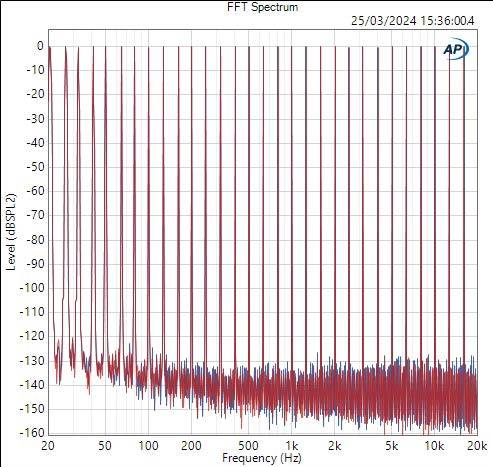Ferrum WANDLA GoldenSound Edition Measurements & Discussion
The WANDLA GoldenSound Edition features several changes over the original, and slightly different measured behaviour.
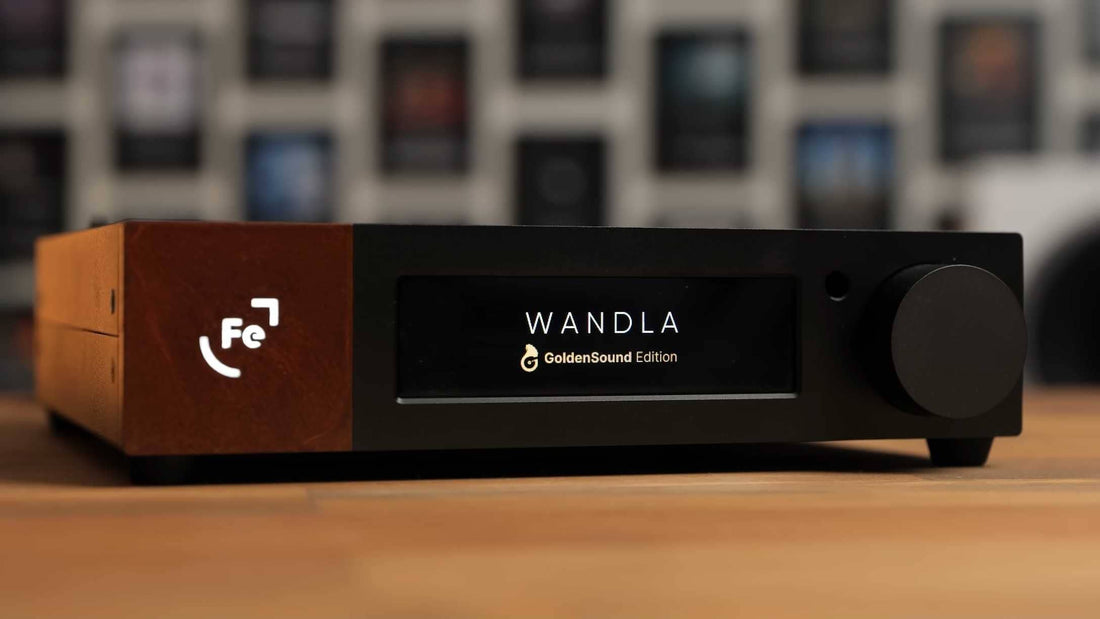
- DISCLAIMER - THIS IS NOT A REVIEW
- Design and I/O
- Internals
- GoldenSound Edition Changes and Features
- Measurements
Ferrum WANDLA DAC - GoldenSound Edition
DISCLAIMER - THIS IS NOT A REVIEW
This post is NOT a review, and is intended to provide some transparency regarding the objective performance of the WANDLA GoldenSound Edition, as well as to show what has been changed with this new version.
The WANDLA GoldenSound Edition is a collaboration product between Ferrum and myself, and I receive a cut from sales of the product. Given this direct financial incentive, there would be a clear conflict of interest were I to review this product, and therefore I will not be producing one. I did however ask in my patreon supporters chat whether they thought I should provide standalone measurements, and the majority said yes:
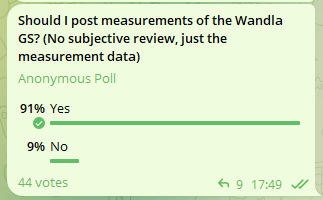
This post will therefore be a little more barebones than usual, as I will keep my own subjective commentary to a minimum, and simply discuss the facts of the design, internals, and changes, and present the measurement data with no subjective interpretation except for where I feel something is a simple statement of fact to provide clarity to the reader.
If you're interested in a review of the Wandla, you can check out my thoughts on the original Wandla here before having the opportunity to work on this product with Ferrum:
Do not make a purchase of this product based on this article or anything I have to say about it, base your decision on what other people say about it once user feedback and other reviews are available. This post serves to provide measurement data and an explanation of some design aspects as this information and transparency is beneficial to readers, but is in no way intended to be any form of recommendation.
Design and I/O
The WANDLA GoldenSound Edition retains the same form factor and external aesthetic as Ferrum’s OOR, ERCO, and HYPSOS units, meaning users with multiple products in the lineup can still make a matching stack. The elements that differentiate the GoldenSound Edition are kept within the splash screen and UI of the unit itself.
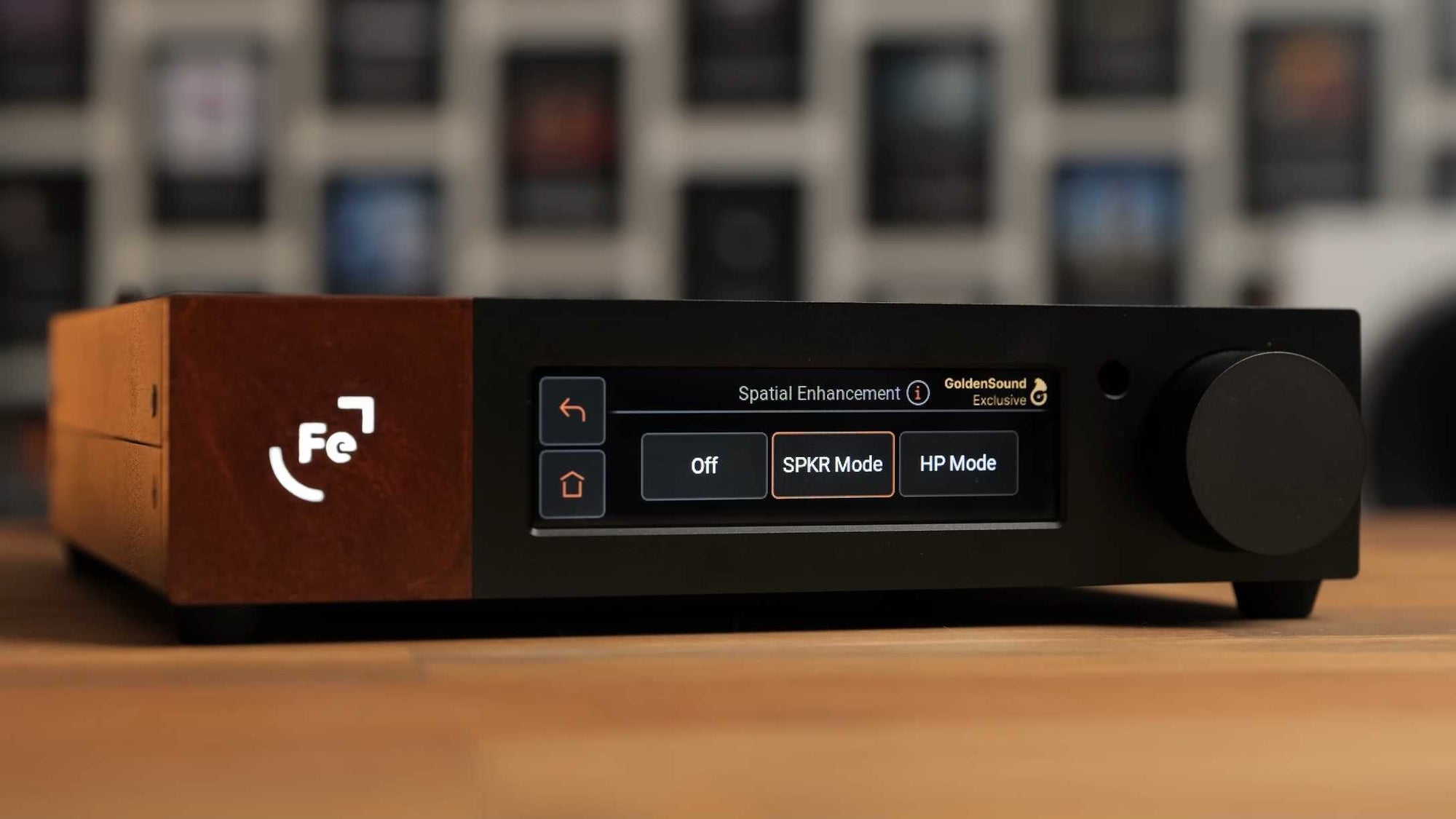
One concern held by owners of the OOR and HYPSOS was whether they would be able to power the WANDLA as well as their OOR from the single HYPSOS power supply, or if they’d need to make a choice between the two. To address this, Ferrum has released a splitter unit which will allow the HYPSOS to power both an OOR and a WANDLA simultaneously.
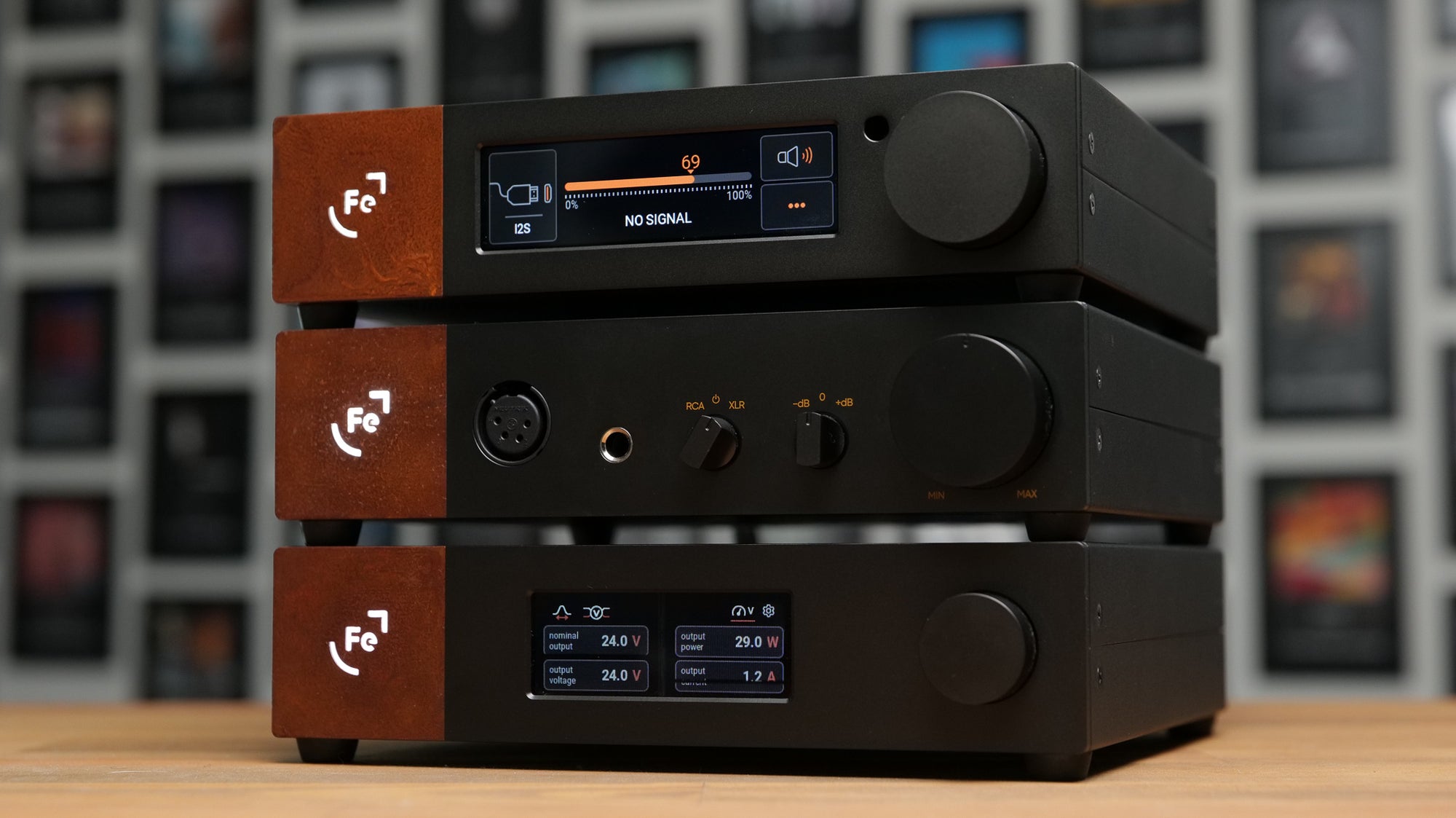
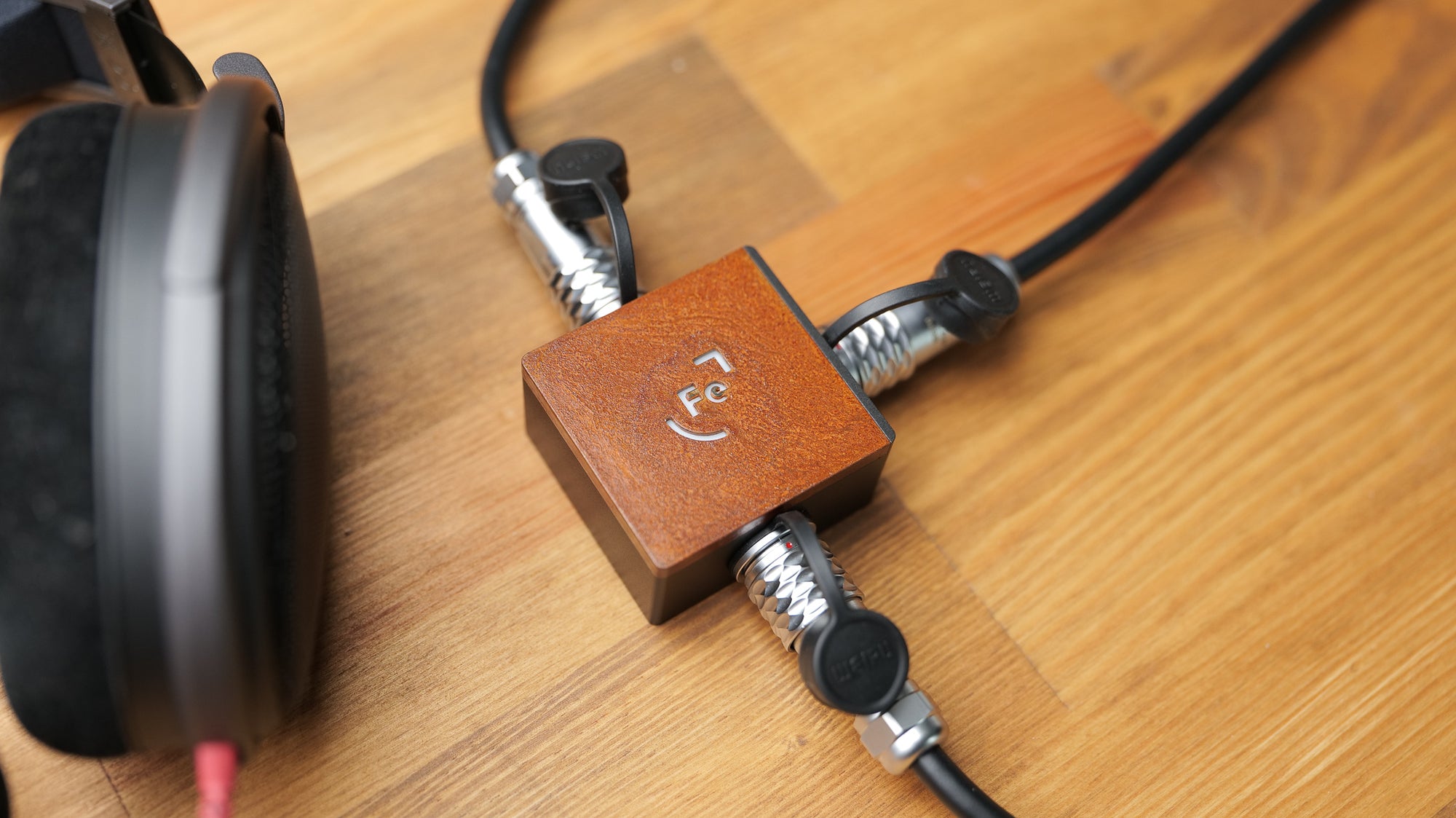
The chassis is the same matte black finish as the other Ferrum products, accented by the corten steel square and illuminated Ferrum logo, however the display is significantly larger than that of the HYPSOS and functions as a touch screen. This is to facilitate the numerous features and configuration options the WANDLA has to offer. There is also a metal remote included so that you can control volume and other controls from your listening position.
The WANDLA offers seven total input options: USB, optical SPDIF, coaxial SPDIF, AES, I2S, HDMI ARC, and also RCA analog inputs.

The analog RCA inputs do not go through an ADC, but are routed to the outputs in a fully analog signal path with analog volume control, allowing the WANDLA to function not only as a DAC but also an analog preamplifier. This will be handy for those that may have a vinyl turntable, allowing them to have the WANDLA serve as the single central control unit for their entire system. It’s also worth noting that the single ended signal fed to the analog input is immediately converted to balanced internally, and remains balanced the rest of the way through the device including through volume control and the output stage.
Whilst there are no balanced analog inputs, the DAC itself is balanced and offers true balanced outputs.
Internals
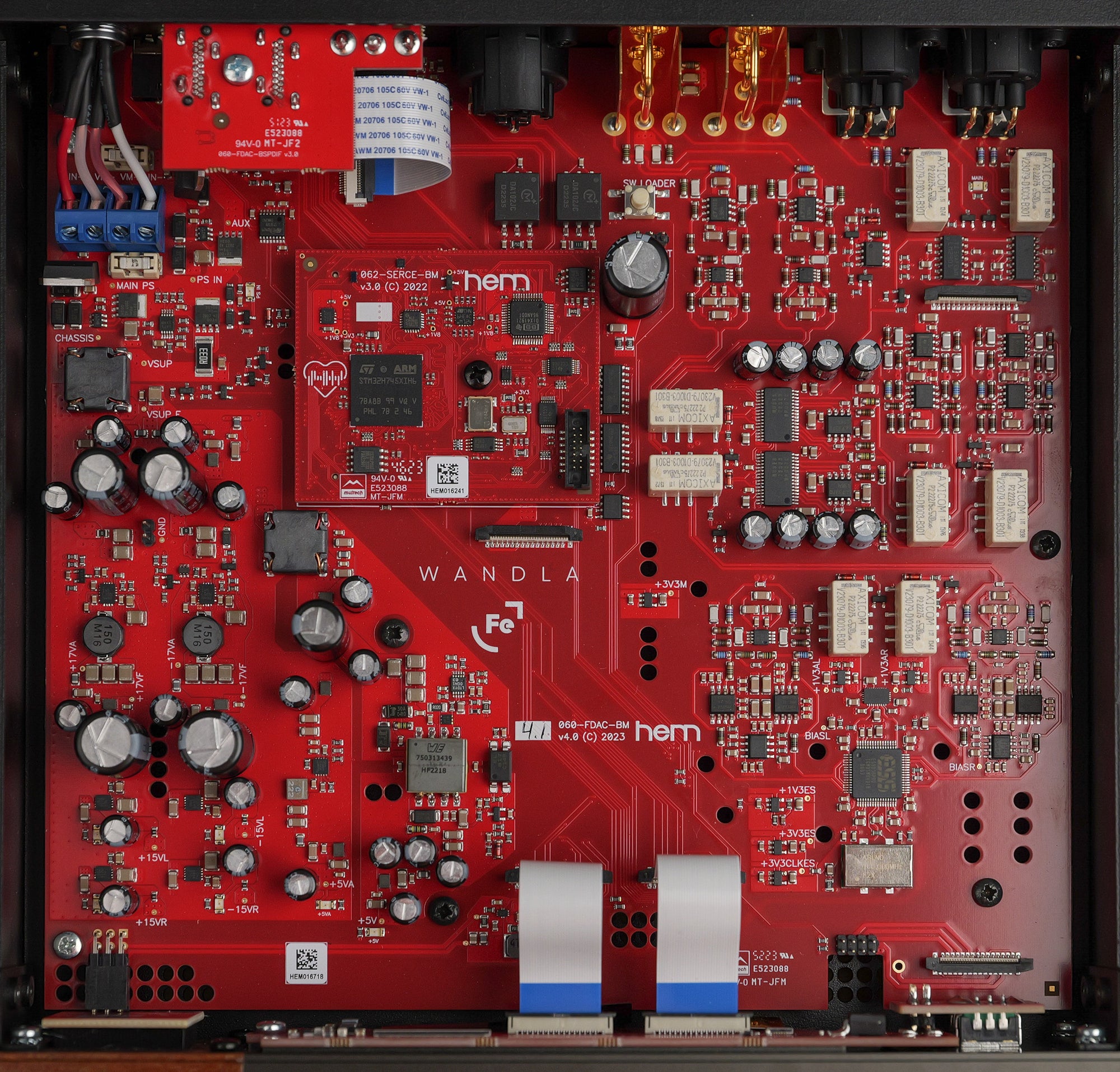
Taking a look at the internals of the WANDLA, the first thing one might notice is the daughterboard in the centre of the device, called SERCE. This an all in one audio control board that acts as the brain of the device, handling all controls, outputting to the display, providing receiver functionality for all digital inputs including USB (no XMOS chip is used in the WANDLA), and offers flexibility for higher performance digital audio processing than what is available on a standard DAC chip.
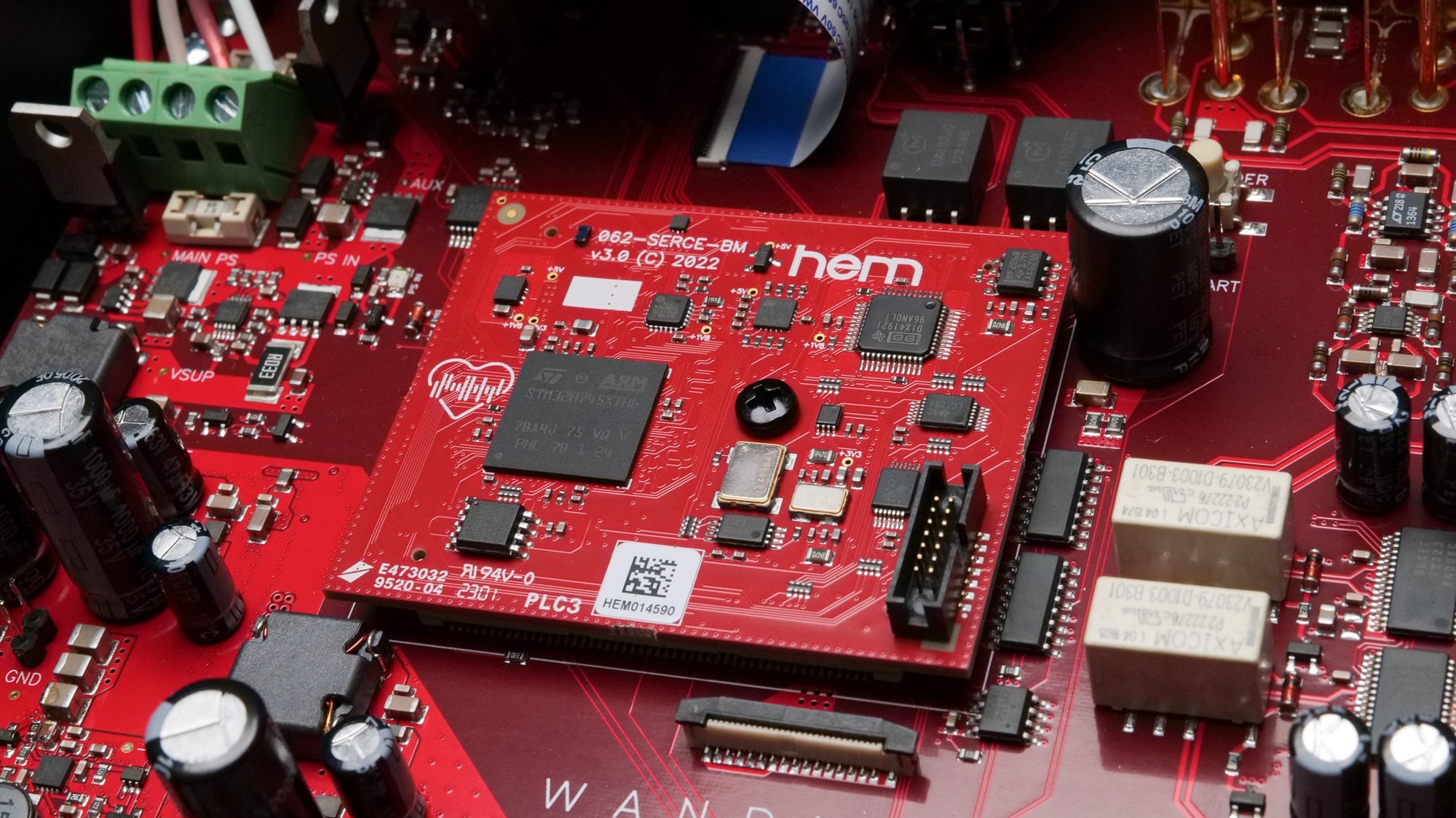
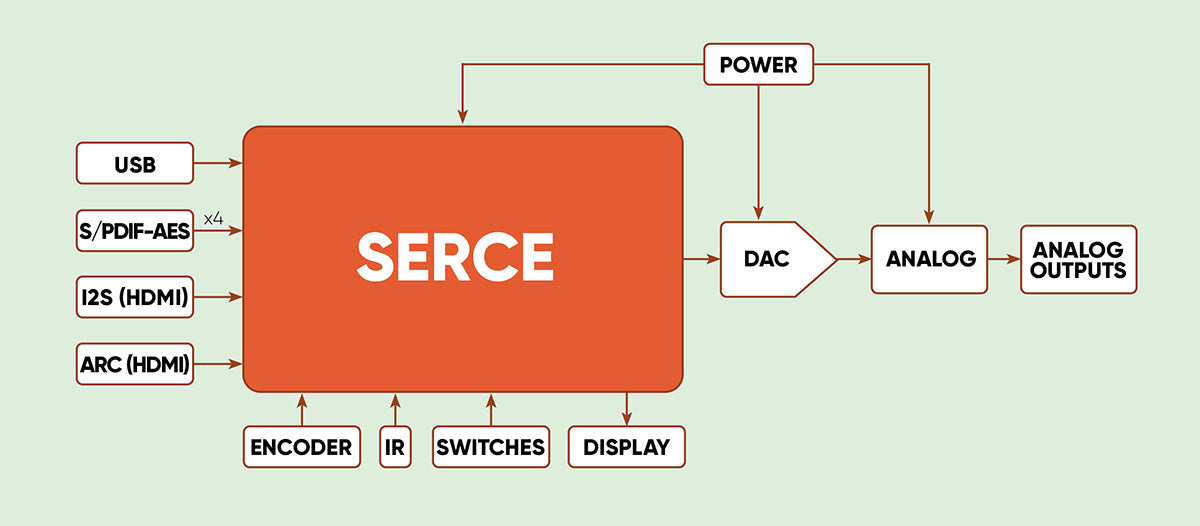
Taking advantage of this capability, Ferrum partnered with Jussi Laako, the developer of the high performance upsampling tool ‘HQPlayer’ to design a set of high performance reconstruction (oversampling) filters for the WANDLA. these new ‘HQ’ filters provide a filter response that fully has no meaningful early rolloff under 20khz, but fully attenuates by 22.05khz. The standard ESS filters are also selectable in the menu if desired or if you wish to compare the sound to the HQ filters.
The analog and digital sections of the device have independent power supply sections, isolated from each-other to minimise unwanted interaction.
For the DAC itself, the ESS9038 chip can be seen in the lower right, surrounded by power filtering and voltage regulation components, with the clock in close proximity, and Ferrum’s IV stage design to the upper right and left. This IV (current to voltage conversion) stage has been designed with both measurements and listening as validation, and I was told that they did try several other IV stage designs which had excellent measurement results, but did not sound good enough to their ears. After various iterations and design revamps, they settled on the design seen here which they found to be the best sounding option.
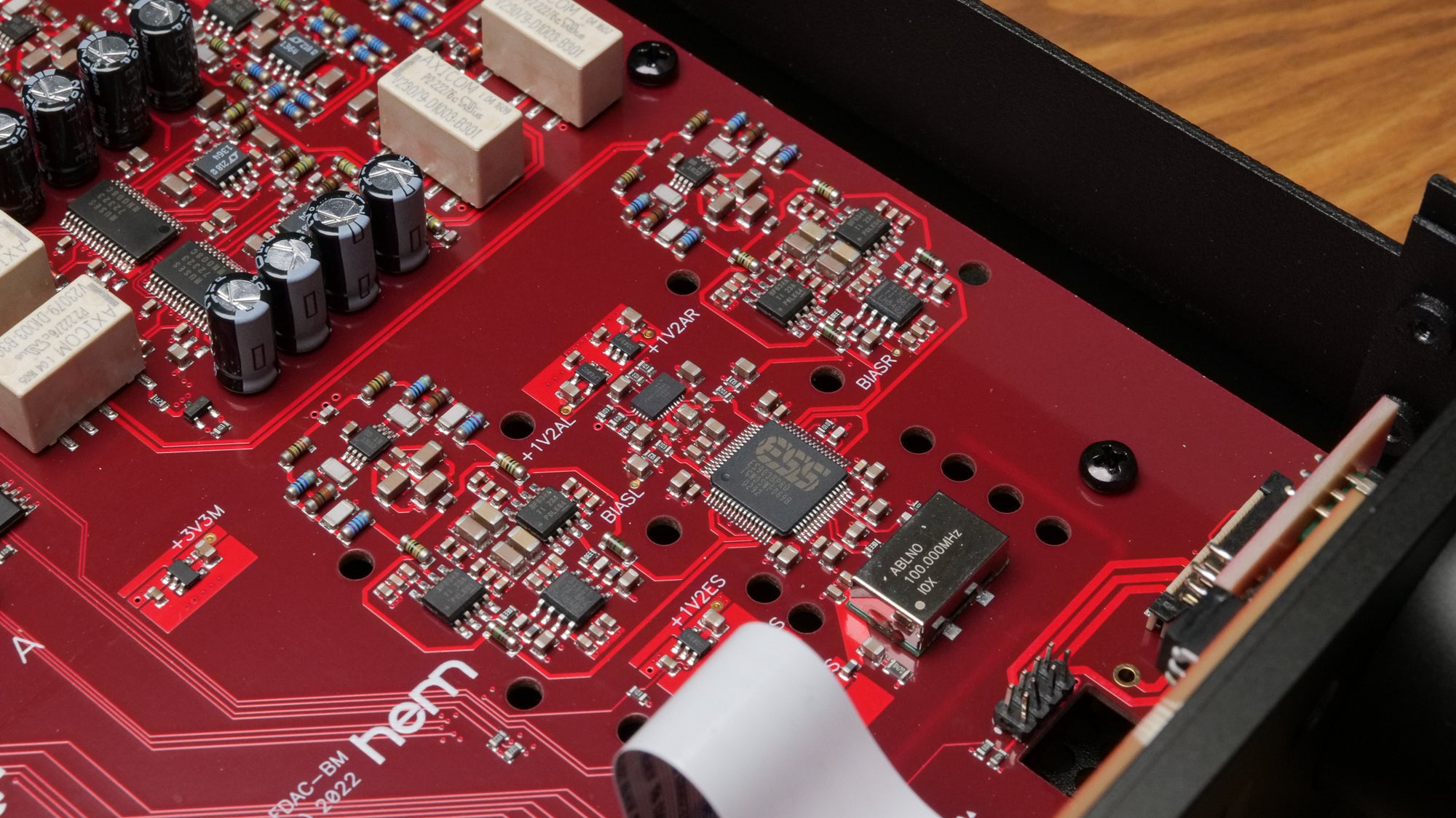
Above this, the output stage itself can be seen, in addition to two MUSES laser trimmed resistor attenuation ICs which facilitate the analog volume control.

The user has the choice of selecting digital volume control, in which case all attenuation is done in the digital domain by the SERCE processor, or in the analog domain, where the DAC converts the digital signal at full level, and then attenuation is done by the resistor ladder ICs.
Some enthusiasts feel that less digital manipulation is always better, but some would argue that digital domain attenuation can allow for objectively more accurate results than analog in some instances. In any case, the user has the choice available on the WANDLA to use whichever they prefer.
Additionally, in the WANDLA GoldenSound Edition, a new hardware voltage divider circuit has been added, which allows the user to bring down the output voltage of the WANDLA from just under 10V, to just under 4V, thereby ensuring compatibility with any amplifier, without needing to add the MUSES chips into the signal path or apply any digital volume control. This new feature can be used in conjunction with either the analog or digital volume control as well if desired.
GoldenSound Edition Changes and Features
For the WANDLA GoldenSound Edition, I worked with Ferrum to develop six new features and changes that I personally feel provide an enhancement to the user’s listening experience:
– Elevated digital headroom: Many modern musical tracks are produced in a way that leaves very little headroom in the recording, often referred to as the “Loudness Wars”, This can cause clipping and additional distortion during playback on most DACs due to the oversampling filter being unable to accurately reconstruct strong transients. The WANDLA has its own digital processing headroom, but GoldenSound Edition has elevated headroom to accommodate it to its additional DSP functions, which are described below, and therefore, unlike the vast majority of available DACs, the WANDLA GoldenSound Edition is highly immune to intersample overs even in bypass mode at full output level, allowing you to play back any music free from additional distortion.
– Spatial Enhancement: The WANDLA GoldenSound Edition features a unique spatial enhancement that utilizes the power of the Ferrum SERCE module to provide an expanded soundstage and improved clarity of separation between musical elements, whilst avoiding the drawbacks commonly found in other approaches. A Headphone Mode and a Speaker Mode are offered to provide an enhancement tailored to each use-case, and this is achieved without any coloration to the frequency response, no additional distortion, and no tricks like added reverb.
– Tube Mode: The WANDLA GoldenSound Edition features a tube mode, which intentionally increases the even-order harmonic distortion produced by the DAC, similar to the distortion added by a tube amplifier. This provides a warmer, richer sound without directly changing frequency response, and without the other drawbacks commonly found in tube based devices such as increased noise.
– Impact +: The WANDLA GoldenSound Edition features an Impact + function for those that enjoy a little more low-end in their music listening experience. Though rather than a basic bass-shelf, this feature uses a customized two-band EQ which not only elevates bass but provides additional punch and dynamic impact.
– No MQA: The WANDLA GoldenSound Edition no longer uses any MQA processing, with all content being kept as untouched PCM other than if you choose to enable one of the sound tuning features. All of DSP functions of WANDLA GoldenSound Edition are extensively using the processing power of the WANDLA’s SERCE module. Therefore, to ensure seamless operation, MQA decoder is not available in the GoldenSound Edition.
– Hardware Voltage Adjustment: The WANDLA GoldenSound Edition includes a hardware level output voltage adjustment, allowing the user to swap between just below 10 Vrms output to just below 4 Vrms output. This is facilitated via a dedicated hardware voltage divider in the output stage of the DAC, allowing the user to select lower output voltage and ensure compatibility with all amplifiers, without a need to use any digital volume control, or to have analog volume control components in the signal path. This hardware voltage divider will be available on the standard edition of WANDLA and WANDLA GoldenSound Edition units starting with board revision v4.0.
Revisions older than v4.0 will support this functionality but do so in a slightly different way. These revisions will use the existing analog volume control chips instead.
Measurements
Measurements Include:
- THD+N (SINAD)
- THD+N vs Frequency
- Low Level Signal Output
- Reconstruction Filter/Upsampling
- Jitter
- THD vs Output Level
- Linearity
- Output Impedance
- Volume Matching
- Noise
- Intermodulation Distortion (IMD)
- Crosstalk
- Multitone
Additional measurements and test information available in the full report
Test Setup
- Audio Precision APx555 B-Series analyzer
- Measurement setup and device under test are running on regulated 230V power from a Furman SPR-16-Ei
- WANDLA was warmed up for 6 hours prior to testing
- WANDLA is in ‘bypass’ mode unless otherwise specified
- Stock power supply used for all tests
- USB input, Balanced output used unless otherwise specified
- Tests shown are with a 100kΩ load unless otherwise specified
- Tests shown are on the Wandla GoldenSound Edition, board revision V4.1, firmware V1.4.0 beta
- Exact analyzer/filter configurations for each measurement are detailed in the full reports
- CH1 (Blue) = Left, CH2 (Red) = Right
Full Measurement Reports
Results
Dynamic Range (AES17): 119.4dB
SNR: 121.08dB
IMD SMPTE: -105dB
Noise Level RMS (20-20khz): 7.99uVrms
DC Offset: 45uV active, 102uV idle
Susceptible to intersample overs: No
Output Impedance: 44Ω Balanced, 22Ω Single-Ended
THD+N / SINAD
Disclaimer: SINAD should not be used as a figure to judge the overall performance of a product, it is a figure that combines several aspects of performance into one number whilst not including many others. It should be used as one factor among many when evaluating the overall objective performance of a device, and the type/structure of distortion can often be more important than the level of distortion/noise itself.
1khz Sine 10V (Bypass) Balanced Output:
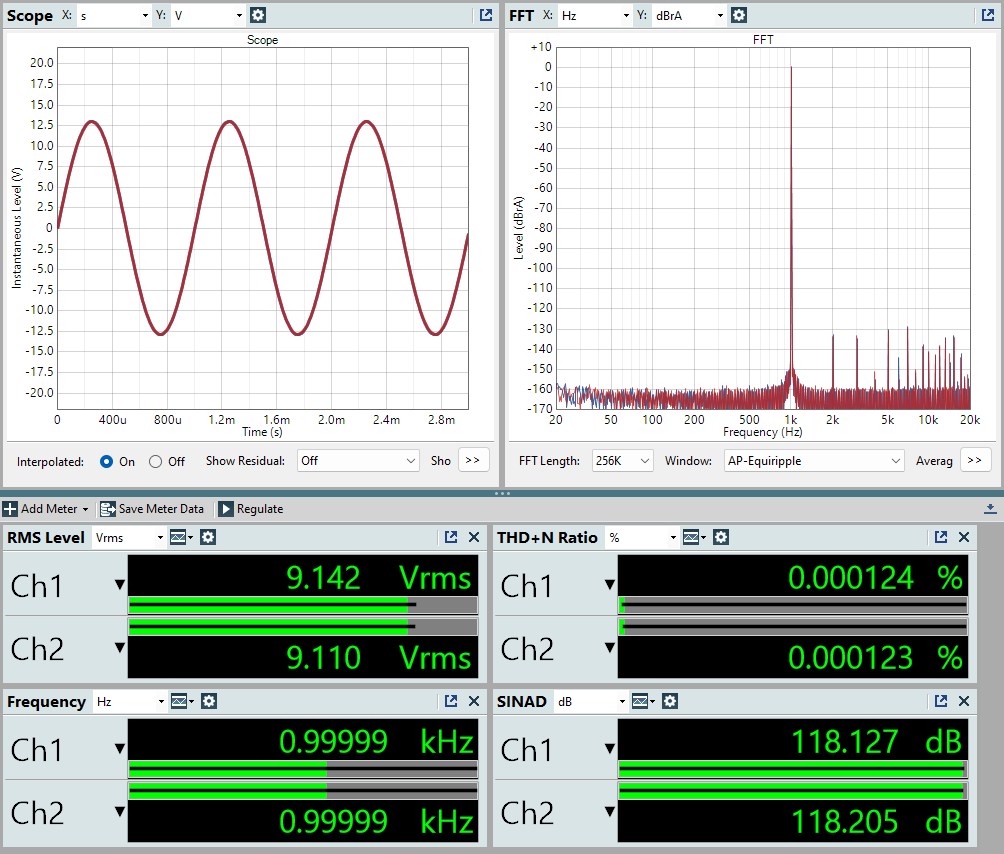
1khz Sine 10V (Bypass) Balanced Output - Tube Mode Enabled:
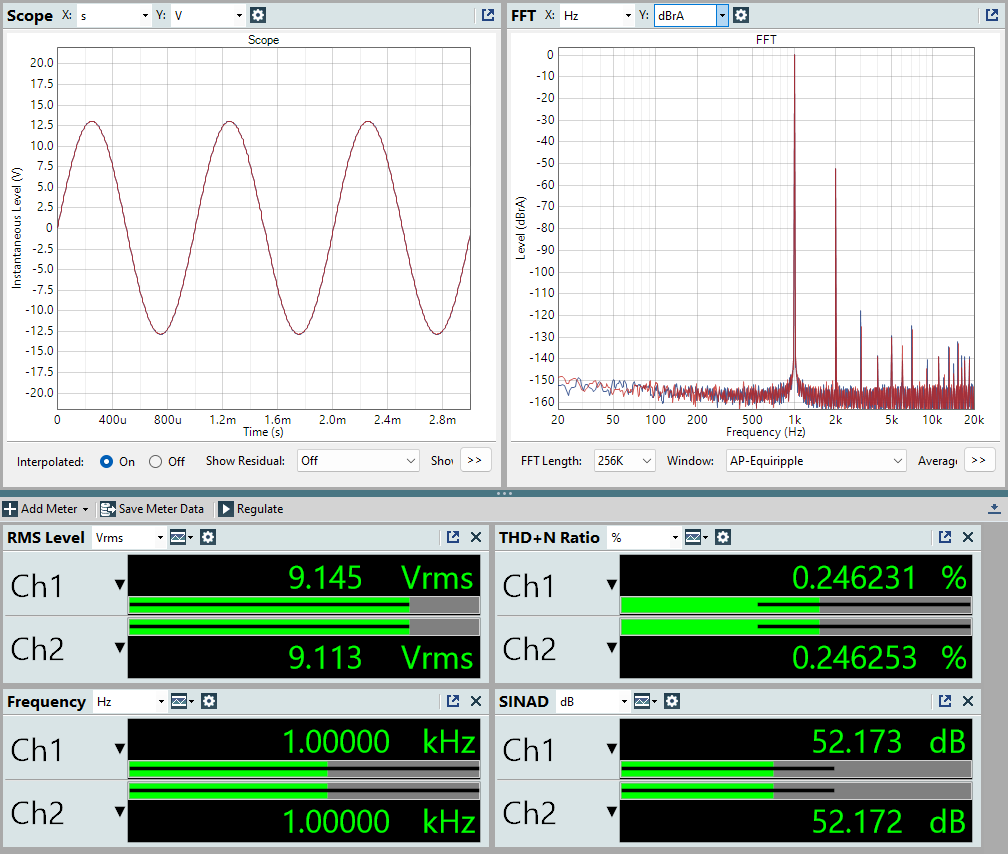
Tube mode significantly increases the 2nd order harmonic distortion produced by the DAC and slightly alters other harmonics. In future I’m hoping to provide additional options that provide distortion profiles closely mimicking specific models of tubes as well, to provide additional customization.
Note: This feature is NOT implemented via DSP in the SERCE module, but is instead done by deliberately misconfiguring the DAC itself so that it produces more distortion but only in the desired way.
Impact+ Mode
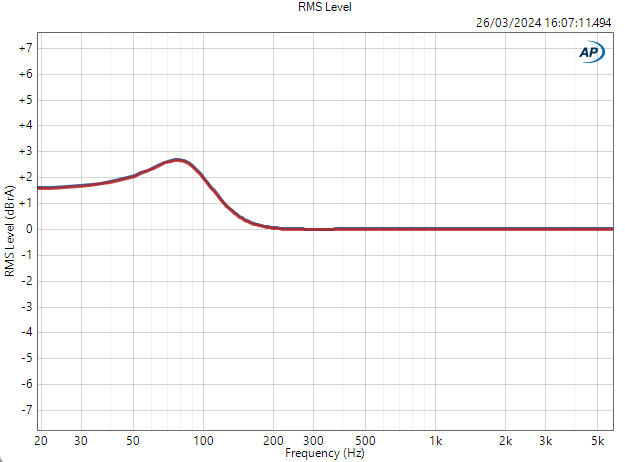
“Impact+” mode provides an increase in bass frequencies, but uses a multiband adjustment rather than a typical bass shelf, to provide not just ‘more bass’ but an additional perception of ‘punch’ or dynamics/impact. The alteration provided is similar in result to that attained when adding an air gap to certain headphone models like the Abyss 1266, but without the loss of subbass. For this feature, the processing is done entirely with 64 bit precision, ensuring the highest possible quality and avoiding the errors that can be incurred by doing EQ processing at lower bit depths as in many other tools.
THD+N vs Frequency (96khz capture bandwidth)
(96khz bandwidth used on the analyzer. Don’t compare this directly to standalone audible band THD+N measurements as the measurement setup is not the same.)
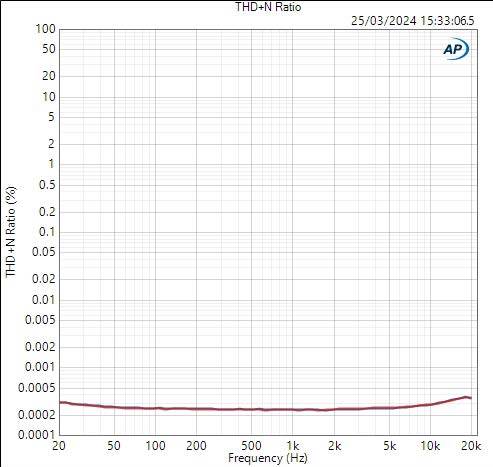
Low Level Signal Output
This test plays a very low level signal through the device to check for any unusual behaviour.
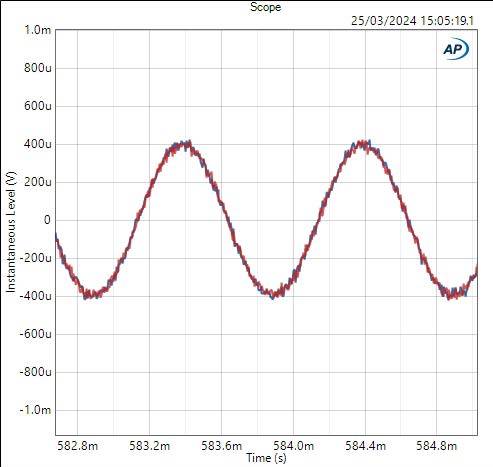
-90.31dBfs 24 bit dithered sine
Reconstruction Filter (Nyquist/Oversampling Filter)
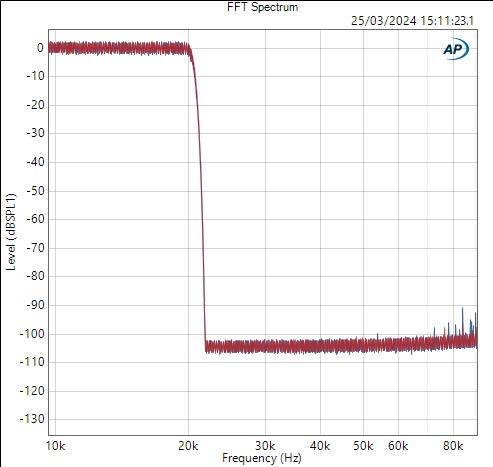
HQ Apod filter fully attenuates by 22.05khz, whilst not rolling off under 20khz
Jitter
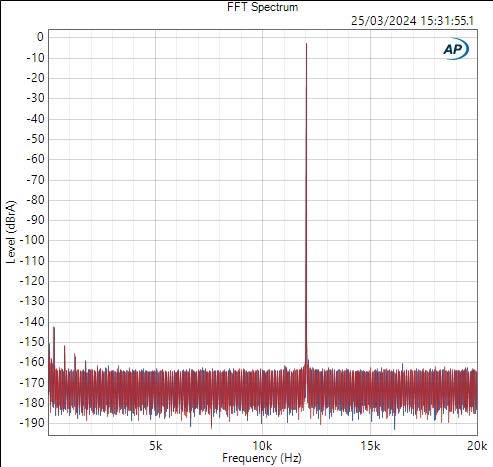
Jitter performance is essentially perfect. I would recommend just using USB with the WANDLA. There is no need to pair it with a separate DDC.
THD vs Output Level
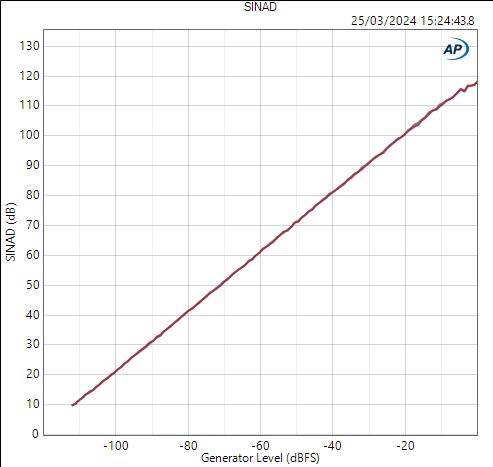
Distortion profile on the WANDLA remains constant and directly proportional to output level.
Linearity
This test plays a 1khz tone through the device, and steps down the level in small increments. Linearity measures how accurately the actual output of the device reflects the intended output. For example, if the level was stepped down by 20dB, but the output of the device was 19.7dB quieter, there is a 0.3dB nonlinearity, which would show as a 0.3dB rise on the graph.

Bandpass filtered, this is measuring only the accuracy of the 1khz tone itself
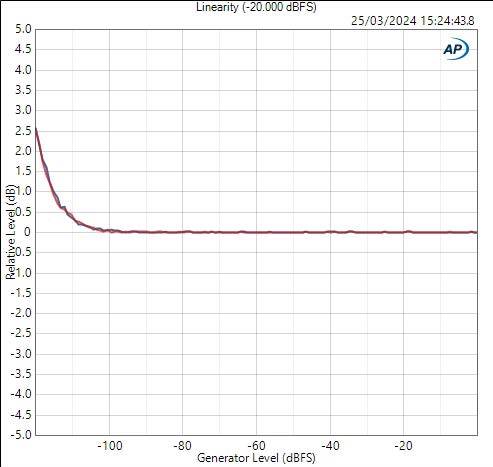
No bandpass filter, this factors in noise into the result
Output Impedance
XLR (Balanced): 44 Ω
RCA (Single-Ended): 22 Ω
Volume Matching vs Attenuation
This test adjusts the amplifier to different levels using the volume knob, and shows the level difference in dB between the two channels.
Some amplifiers particularly at lower volumes will have channel imbalance. This test checks how closely the two channels of an amplifier match as volume is reduced.
The WANDLA uses either digital volume control, or analog volume control facilitated by a laser-trimmed resistor attenuation chip. Channel matching was within 0.05dB at all times on the analog volume control, and perfect with digital volume control.
Noise
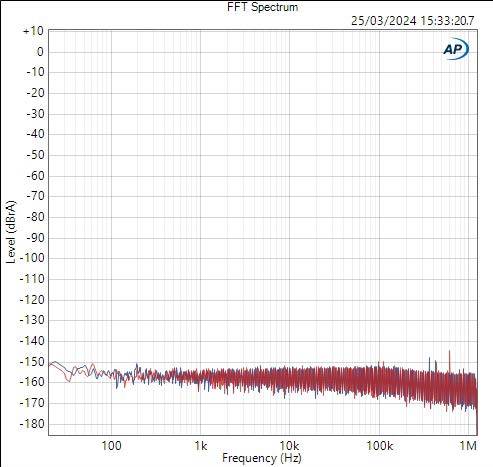
256k FFT, 3 Averages
No switching noise or other sources of noise observed upto 1Mhz.
IMD
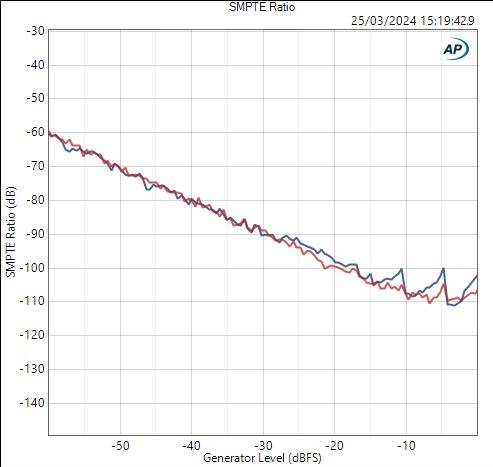
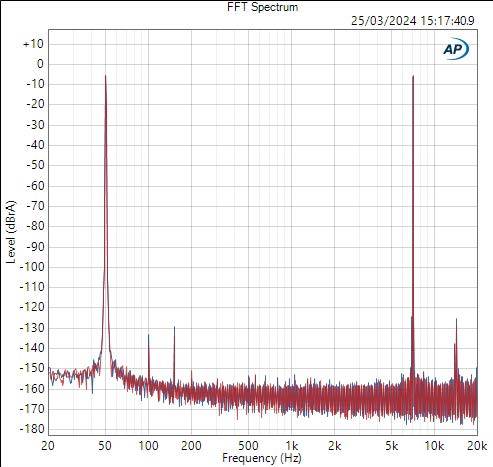
Crosstalk
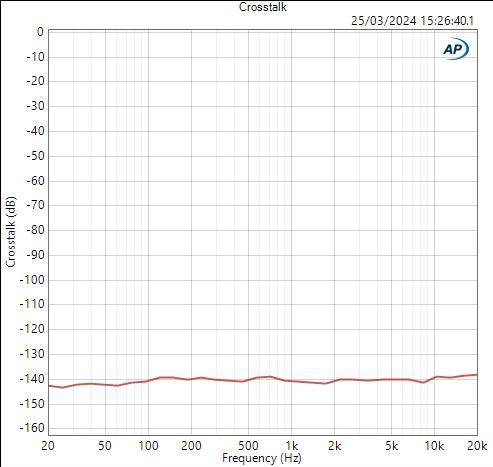
Multitone
